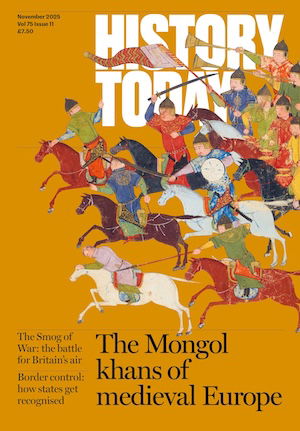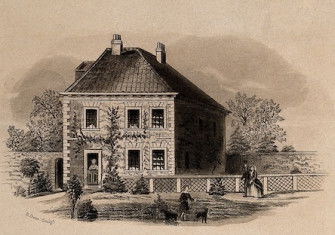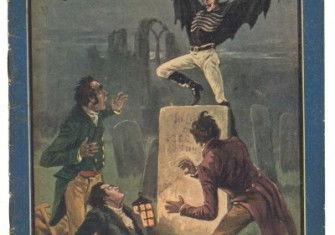Fake Views: Victorian Spirit Photography and its Critics
The 19th-century craze for spiritualism ‘resurrected’ the dead through manipulated photographs, a practice that boomed with the trauma caused by war – though it was not without its sceptics.
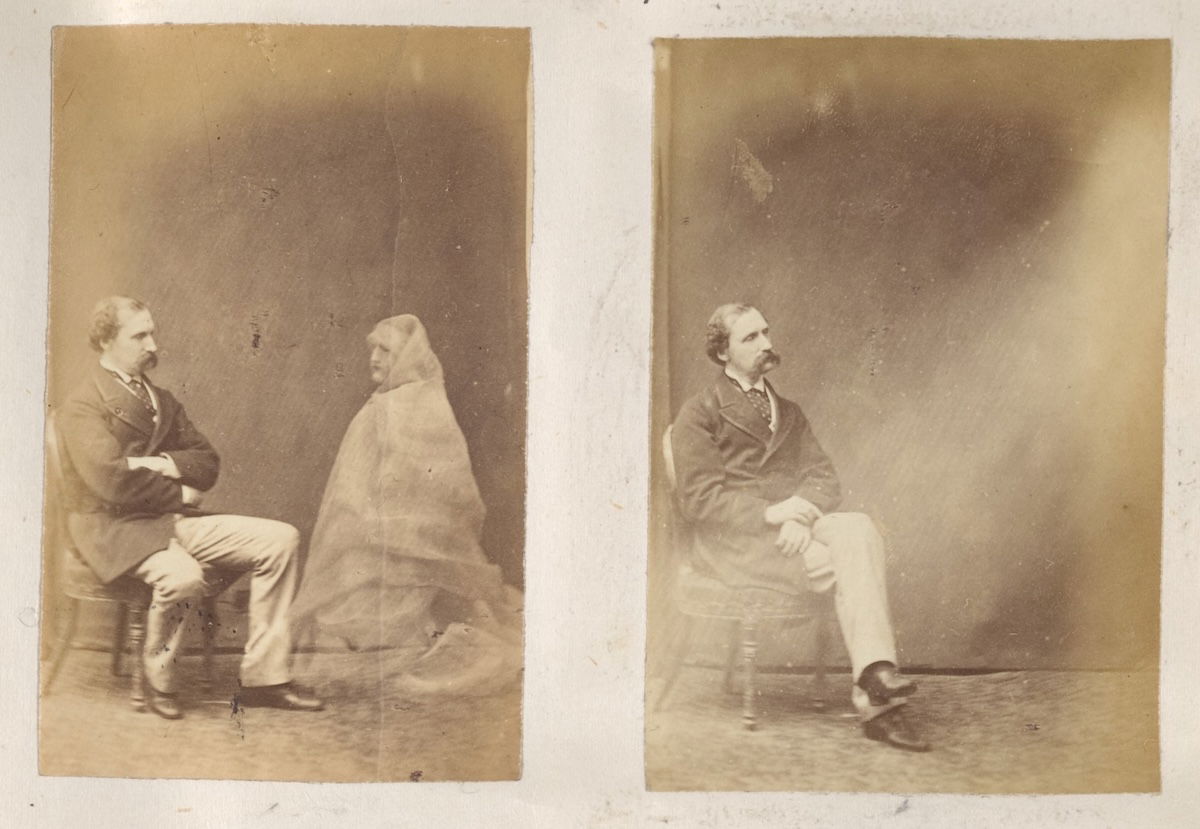
The fact that photographs can be manipulated is familiar and everyday to us now, but, when photography was in its infancy, this revolutionary new technology appeared almost magical to some. Writing in 1840, shortly after Louis-Jacques-Mandé Daguerre revealed his pioneering photographic process to the world in Paris, an Australian journalist described the invention as ‘more like some marvel of a fairy tale or delusion of necromancy than a practical reality’. Even as technology moved on from Daguerre and his eponymous ‘daguerreotype’ process, photography was still a thing of wonder.
When, in 1861, a man from Boston came forward with the claim that he was able to photograph ghosts, it is perhaps unsurprising that his images were greeted with a certain amount of credulity. The famous images produced by William H. Mumler show filmy phantom figures standing next to, or even embracing, their living relatives. Although these so-called ‘spirit photographs’ may look almost comically unconvincing today, the process of photography was still shrouded in enough mystery that some were willing to believe. An inability to understand how photography worked was not the whole story, though. Mumler’s photographs were presented to the world at a time when many believed it was possible to communicate with the dead.
Posthumous contact
By the 1860s America was gripped by a craze for ‘spiritualism’, a new religion based on the belief that spirits existed and could communicate with the living. The movement began in 1848, when two sisters from New York, Kate and Maggie Fox, aged 11 and 14, made the extraordinary claim that they were in communication with the dead. Departed spirits, they said, used knocking sounds to send them messages from beyond the grave. The sisters’ public demonstrations of this phenomenon convinced many, and over the next 20 years enthusiasm for posthumous contact grew. Mediums began to offer public and private seances, during which deceased communicants were invited to make their presence known.
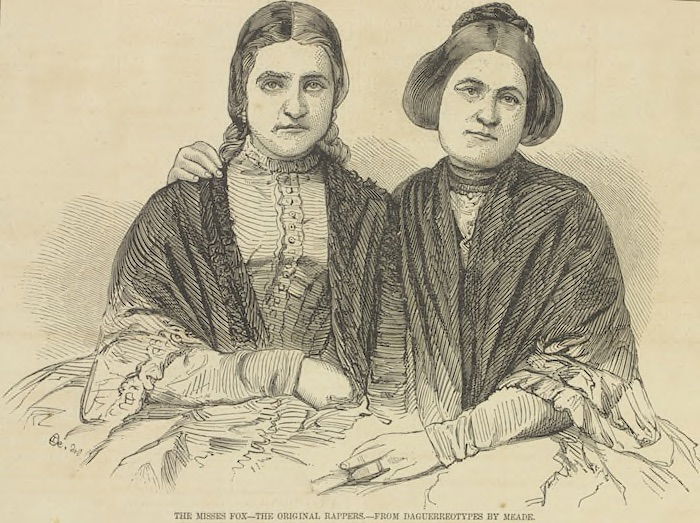
While some spirits contented themselves with passing messages through a medium, others allegedly preferred forms of physical manifestation, controlling the medium’s hand to create written missives or drawings. Occasionally, spirits were even said to produce ‘ectoplasm’ – a mysterious, viscous substance. By the time Mumler presented his ghostly images, some members of the public were confident believers in the physicality of the spirit world. With such a system in place, the idea of spirit photography was a logical progression.
Misery business
It was not only spiritualists who had a vested interest in spirit photography. America was tearing itself apart with the Civil War. This was to prove the deadliest conflict in US history, with a death toll in the region of 750,000. Bereavement was big business and Mumler spotted his opportunity. Many who had lost loved ones were looking for a sign of hope or a sense of closure and Mumler was able to give it to them – for a price. His photographs were soon heralded in the burgeoning spiritualist press.
To begin with, it was an accident. Though an engraver by trade, Mumler dabbled in amateur photography. During his experiments, he reused a photographic plate that carried residue from an earlier portrait. When the photograph was developed, this earlier image appeared as a ghostly figure in the background – a case of double exposure. With this new process in his arsenal, Mumler set about selling his so-called spirit photographs. In them, his subjects sat in the foreground while the spirit they wished to see appeared as a shadowy shape behind them, often with a reassuring arm around the sitter. Mumler ‘borrowed’ these mysterious figures from other photographs.
The fee for Mumler’s conjuring trick was up to $10 per photograph, a huge amount at the time. For $7.50 he even offered a service by mail – customers would describe the spirit they wished to see and Mumler would post them a photograph that fitted the bill. His most famous client was Mary Todd Lincoln. She had been sitting next to her husband, Abraham Lincoln, when he was assassinated in 1865. This tragedy was compounded by the fact that three of the Lincolns’ four sons died before reaching maturity. In the finished product, Mrs Lincoln sits smiling in a chair. Behind her stands the ghost of her husband, gazing down at his wife, his hands resting on her shoulders.
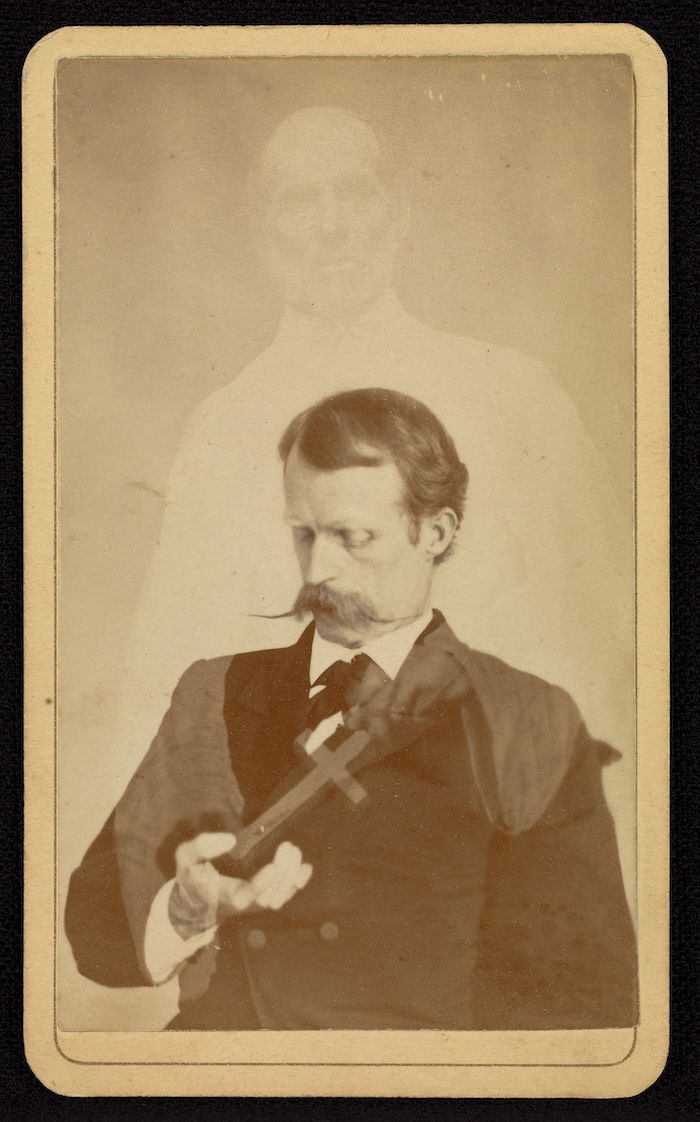
For those like Mary Todd Lincoln who were desperate to believe, the burden of proof was low; Mumler’s images were enough to convince them of his abilities. Others were more sceptical. The Boston photographer J.W. Black visited Mumler’s studio to see if he could work out his trick. After observing the creation of a spirit photograph, he was forced to admit he had no idea how Mumler managed it. Others were less generous – particularly when it transpired that some of the ‘ghosts’ that appeared in the photographs were real, living people. Rumours swirled, with some even claiming that Mumler broke into his clients’ houses to steal photographs of the deceased, who would then reappear as ‘ghosts’ in his own.
It was not long before Mumler found himself in court, charged with fraud. Arguing for the prosecution was an unlikely figure: the circus impresario P.T. Barnum. Nicknamed the ‘Prince of Humbugs’, Barnum saw nothing wrong with a harmless hoax – as long as the paying public was entertained. One of the main attractions at Barnum’s museum of curiosities was a creature that he claimed was a mermaid. In fact, it was the body of a monkey stitched to the tail of a fish. But Barnum drew the line at spirit photography, which he saw as a cruel fraud perpetrated on the vulnerable. Appearing at the trial as an expert on ‘humbugs’, he condemned Mumler’s practice. As evidence, he produced an image he had commissioned from another photographer – a portrait of himself with the ghost of Abraham Lincoln standing at his shoulder. Barnum explained how this photo was faked. Although Mumler was acquitted, his reputation never fully recovered.
English apparitions
On the other side of the Atlantic, sceptics also queried the veracity of images that purported to capture life from beyond the grave. In England during the 1870s, Frederick Hudson began operating as a spirit photographer after he was approached by a Mr and Mrs Guppy, practising mediums who hoped to capture the spirit world on film. For some, the photographs Hudson produced offered proof of a spiritual realm at a time when scientific advancements pushed against the intangibility of faith. For others, the photographs could only be the result of technological trickery. Like Mumler, Hudson was frequently accused of fraudulent behaviour. The prominent spiritualist J. Enmore Jones was one of the first to question the photographs, while Georgiana Houghton, a celebrated medium – and spirit artist – asserted their authenticity. The debate spread, and reports by believers and sceptics alike appeared in spiritualist periodicals and the pages of The British Journal of Photography. Hudson was accused of using double exposure, substituting plates and even dressing up extras to play the part of the ghost.
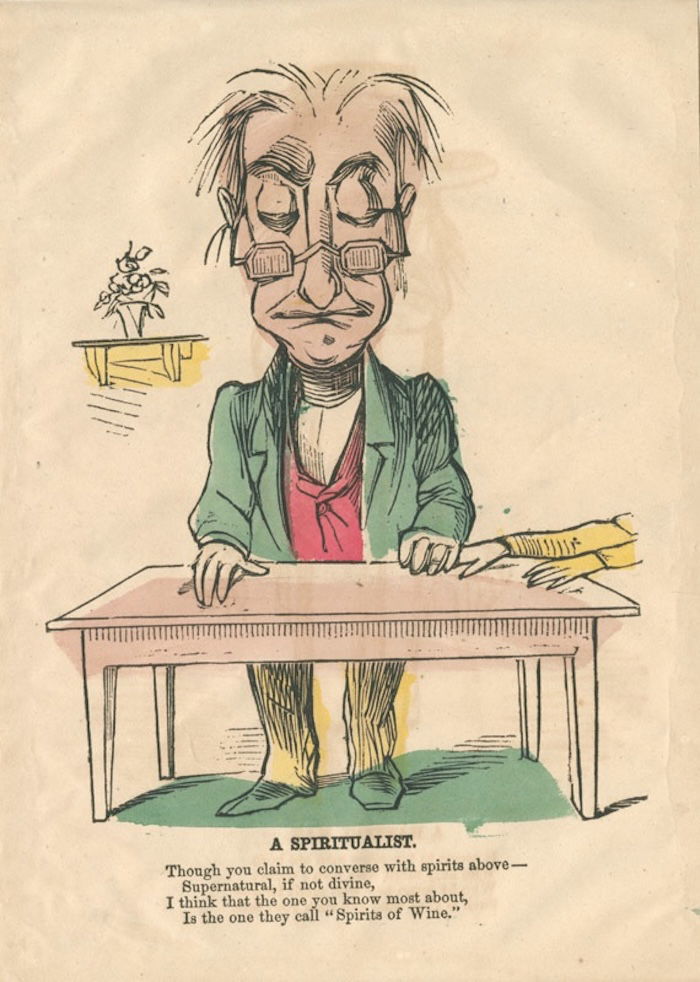
Despite these criticisms, Hudson retained a loyal following. Even the eminent naturalist Alfred Russel Wallace sat for a photograph that ‘captured’ his deceased mother, later declaring in Miracles and Modern Spiritualism (1874) that spirit photography offered ‘the most unassailable demonstration that it is possible to obtain of the objective reality of spiritual forms’. Endorsements from public figures and former clients sufficed to convince those who wanted to believe, and Hudson continued to work. In 1882 a selection of his photographs was published in Houghton’s Chronicles of the Photographs of Spiritual Beings, the author declaring that ‘Mr Hudson’s power has not left him’ in spite of his advanced age.
The tragedy wrought by the First World War led to a boom in the popularity of spiritualism, as the grieving sought contact with those they had lost. Interest in spirit photography grew, and a former carpenter, William Hope, was well prepared. In the run up to the war he had begun to develop his reputation as a spirit photographer, claiming to have captured his first ghost on film when taking a photograph of a friend in 1905. With only two people present when the photograph was taken, there was some surprise when someone else appeared on the developed film. Declaring himself a believer, Hope went on to set up the ‘Crewe Circle’, an organisation for like-minded spiritualists. Before long he had a high-profile client base, presenting photographs of ghostly family members to the chemist Sir William Crookes and the Reverend Charles L. Tweedale. He even claimed to have caught the spirit of former prime minister William Gladstone on film.
National trauma
During the war years, Hope’s services were sought out by Lord and Lady Glenconnor, who were supplied with a posthumous image of their son, the war poet Lieutenant Edward Wyndham Tennant, killed in action during the Battle of the Somme. Reverend Tweedale’s exploration of Man’s Survival After Death (1920) fully supported Hope’s vocation, recalling numerous instances of comfort offered to those bereaved. Despite such endorsements, Hope’s claims were also viewed with some suspicion. In 1922 the Society for Psychical Research sent the renowned paranormal investigator Harry Price to examine Hope’s methods. Offering Hope use of new glass plates, seemingly as thanks for the photographer’s time, Price rapidly alleged fraud. The proffered plates had been surreptitiously marked: when viewing the developing images, Price noted that the plates were not those he had marked, suggesting a substitution had occurred. The spectral images, it seemed, were caused by double exposure rather than spiritual presence.
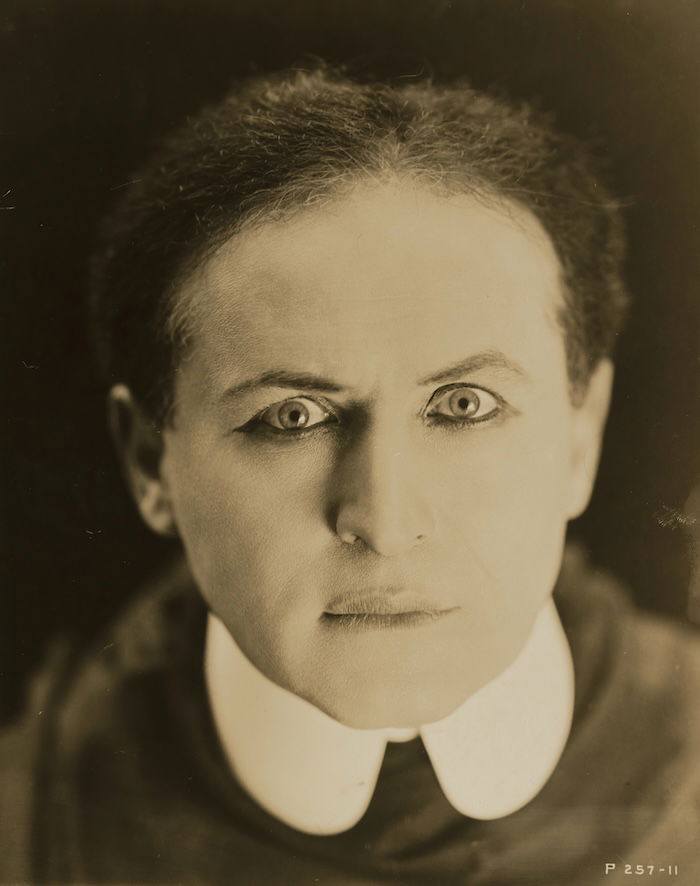
When Price’s findings were published, Sir Arthur Conan Doyle declared his vehement support of Hope. A staunch spiritualist, Conan Doyle published The Case for Spirit Photography in 1922 to defend ‘the reality of Mr Hope’s most remarkable gift’. Conan Doyle’s vindication of spirit photography also referenced images taken by Mr Vearncombe and Ada Emma Deane, the ‘little, elderly charwoman’, who went on to publish an image of ghostly troops surrounding the Cenotaph on 11 November 1923. Each of these photographers was condemned by Harry Houdini, whose rejection of spiritualism had already caused a rift with Conan Doyle, a former friend. Writing about spirit photography in A Magician Among the Spirits (1924), Houdini starkly declared that with ‘Spirit photography as with all other so-called psychic marvels, there never has been, nor is now, any proof of genuineness beyond the claim made by the medium’. While the national trauma of war prompted a public desire to find solace in images of those lost, sceptics continued to look for evidence of fraud.
New incarnations
Between the American Civil War and the First World War, spirit photography took advantage of the tragic times. The strange images produced by Mumler, Hudson and Hope survive as curiosities, each reminding us just how much people have wanted to believe in life after death. Despite the trickery there is no doubt that they offered comfort to many.
In recent years, there has been a resurgence of interest in the paranormal and alternative belief systems. This fascination springs from various factors: a distaste for organised religion, a desire to get back to nature at a time of climate crisis, a pushback against the digital age and a reaction to the turbulent political landscape. Now, we carry cameras in our pockets, and the world is reeling from the coronavirus. It may only be a matter of time before a new incarnation of spirit photography emerges from the shadows.
Anna Maria Barry and Fiona Snailham research Victorian culture.
